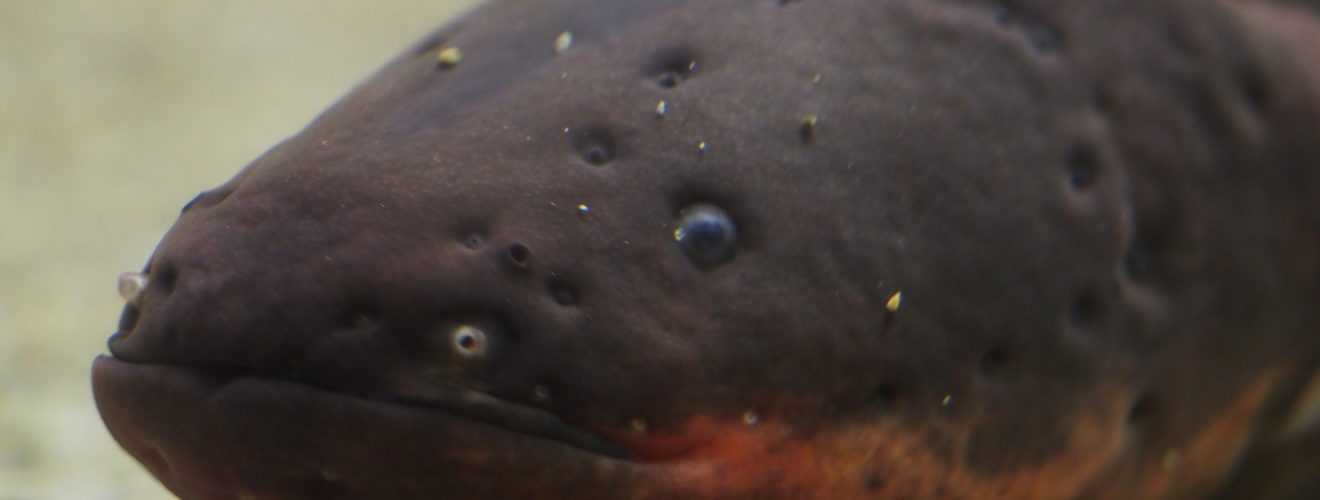Four fishy facts about electric eels

They’re not eels, but knifefish.
Eels are in the fish order Anguilliformes, characterised by a complex life cycle. Electric eels, however, are Gymnotiformes (knifefishes), which inhabit rivers for their life cycle, using electricity to communicate, hunt, and navigate1. Many fish produce electricity, but Gymnotiformes take it up a notch. While all knifefishes use electric pulses to navigate, electric eels pack enough voltage for use as a weapon.
They have three electric organs, and can produce a discharge of up to 860 volts.
Electric eels have three electric organs: the Sach’s organ, the Hunter’s organ, and the main organ2. These organs fill most of its body length, consisting of around 6,000 electrocytes (adapted muscle cells which produce electricity). The Sach’s organ creates a low-voltage electric field. Electro-sensors in the skin detect disturbances from objects and prey in the field.
The real power of the electric eel comes from the combined action of the main organ and the Hunter’s organ. When triggered, thousands of electrocytes fire simultaneously. From this, up to 860 Volts of electric discharge can be released, useful in defence, and when capturing prey3.
They use their low-voltage current to hunt small river animals.
Despite a charge that can stun a horse, electric eels eat relatively small prey. As juveniles, they feed mostly on invertebrates, moving onto a fish-based diet as they mature. Electric eels are masters of the double-tap: after detecting prey, the eel emits two quick-fire discharges, causing the prey’s muscles to twitch. The eel can then detect their location and fire at targeted, paralysing shock.
The three species of electric eel look similar, but inhabit different regions of Greater Amazonia.
In 2019, a team of researchers found that the electric eel, Electrophorus electricus, is three species instead of one. Using modern DNA analysis to construct a fam-eel-y tree, researchers found three distinct lineages. One lineage, E. varii, lives in lowland waters in the Amazon Basin. The other two, Electrophorus electricus and E. voltai, live in different areas of the highlands. Of these, E. voltai has an egg-shaped head, while E. electricus has a U-shaped head. Electrophorus varii has a less flattened head than the highland species. The different head shapes are believed to relate to the type prey each eats, helping the eels swim and hunt4.
Discovering this diversity in such a well-known species as the electric eel highlights that biodiversity can hide in plain sight, and there are many more species to discover.
Edited by Frankie Macpherson
References
- Grzimek’s Animal Life Encyclopedia
- ‘Electric eel powered Christmas tree’: www.theguardian.com/science/punctuated-equilibrium/2010/dec/30/5
- Newly described species of electric eel serves up shocks of 860 Volts: www.pbs.org/wgbh/nova/article/electric-eel-species/
- A new species of electric eel produces the highest voltage discharge of any known animal: www.eurekalert.org/pub_releases/2019-09/fda-ans090419.php










